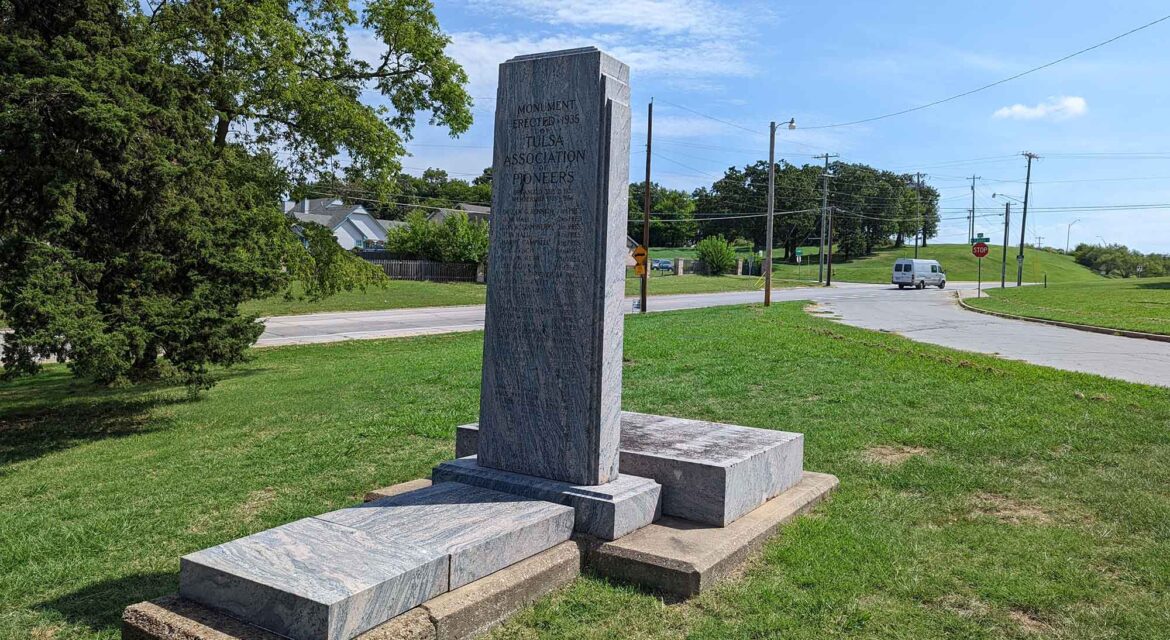 Featuring notable monuments that have been interspersed amidst a 24-acre city park, Owen Park is connected to a vision that spans the past and present of Tulsa. By making the park much more than a simple green space, Owen Park showcases how a vision to embrace and celebrate pieces of history can enable engagement with distinct audiences and across entire eras.
Featuring notable monuments that have been interspersed amidst a 24-acre city park, Owen Park is connected to a vision that spans the past and present of Tulsa. By making the park much more than a simple green space, Owen Park showcases how a vision to embrace and celebrate pieces of history can enable engagement with distinct audiences and across entire eras.

The Notable Monuments of Owen Park
 Located northwest of downtown Tulsa, Owen Park was officially opened in 1910 as the city’s first public park. Named after Chauncey A. Owen, a major farmer and rancher in the area in the late 19th century, the park was formed after the city purchased the land from Owen. While the land has a history that stretches back to before Tulsa was founded, it’s the commemorative and literal pieces of history that it contains that have proven to make it such an engaging place for both residents and visitors.
Located northwest of downtown Tulsa, Owen Park was officially opened in 1910 as the city’s first public park. Named after Chauncey A. Owen, a major farmer and rancher in the area in the late 19th century, the park was formed after the city purchased the land from Owen. While the land has a history that stretches back to before Tulsa was founded, it’s the commemorative and literal pieces of history that it contains that have proven to make it such an engaging place for both residents and visitors.
The oldest surviving house in Tulsa resides in Owen Park, after being moved to the park in 1976. Originally built in the early 1880s, it is typical of the style at the time. It was the home of the Reverend Sylvester Morris, a Methodist missionary minister.
Near it is the Indian Nations Monument, built in 1936 by the Tulsa chapter of the Daughters of the American Revolution to honor what was the meeting place of the Creek, Osage and Cherokee nations. The monument commemorates an 1825 treaty between these nations and the United States government.
Originally erected in 1936 at a different location, the Pioneer Memorial contains the names of Tulsa pioneer families that settled in the area from 1881 to 1921. Created by the Tulsa Association of Pioneers to honor members of the association, it also contains three horizontal additions that reflect membership in the organization between 1935 and 1964.
All of these monuments are set amidst a greenspace that provides audiences with numerous ways to enjoy the natural setting and history associated with the area. This combination showcases what it can mean for a park to define a vision of connection and engagement with residents and visitors.

Legacy of History
 City parks of all types and sizes are located across the world but many are little more than open green spaces. In being this kind of green space but also one that actively showcases the history of the city, Owen Park exemplifies what it can mean when the vision of such spaces is about something much more.
City parks of all types and sizes are located across the world but many are little more than open green spaces. In being this kind of green space but also one that actively showcases the history of the city, Owen Park exemplifies what it can mean when the vision of such spaces is about something much more.

